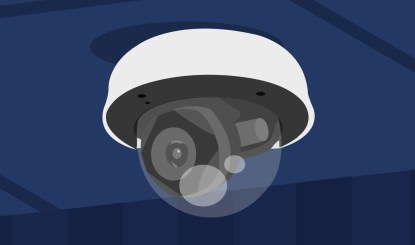Security cameras have been around for close to 100 years and have provided protection for everything from food to businesses, people to livestock. We’ve all seen the grainy, choppy footage on TV, and many of us even have installed simple cameras in and around our homes. And while these cameras have come a very long way over the years – now featuring high definition recording, secure and encrypted recording, privacy protections, audio, and even dewarped fisheye views for capturing the maximum field of view while still being watchable – we are finding more and more people turning to cameras for reasons far removed from security.
Health and Safety
In the time of COVID-19, it’s hard not to start with considerations involving the pandemic. Businesses, schools, manufacturers, health care facilities, congregate homes, and more – anywhere with public or even private access for individuals to come together – have been grappling with ways to keep people safe while the show goes on.
We’re all very familiar by now with the concepts of social distancing, compliance, and contact tracing. But how do leaders actually ensure that their carefully-planned rules and procedures are being followed? You might be thinking Big Brother (watching everyone at all times), but that’s not what we’re talking about here. In fact, the latest camera technologies allow for the benefits of health policy enforcement without the privacy concerns of traditional security systems.
Rather than spending hours combing through recorded footage, organizations can now leverage advanced analytics to determine the density of groups in a given location (ensuring social distancing) – without identifying people individually. Should identification be required for contact tracing, the footage can be zoned and cropped to limit exposure to only the required areas (and those areas can be access quickly, with no need to comb through endless time without any movement).
Physical Resource Management
With the changing nature of today’s work, learning, and gathering places, organizations are challenged with identifying their physical needs as well. Which buildings are no longer frequented? Which spaces are now much more popular? The secure analysis performed on the latest cameras provides insight into traffic patterns, usage times, and density of groupings. Do people consistently reserve conference rooms and then not use them? Are folks gathering in break rooms against policy? This information can help restructure physical settings to maximize efficiency, safety, and satisfaction – not to mention compliance.
Health Care, Retail, Hospitality, and Museums
You’re probably picking up on the trend of analytics as a major breakthrough in camera technology, and you’re right. Industries as diverse as health care, hotels and hospitality, museums, and retail are all taking advantage of these capabilities to drive traffic to desired spots (and away from undesired locations) within their campuses and facilities. Is there a certain exhibit or display that attracts the most attention? Perhaps we move that to a larger space. Is there a certain time of day that a given entrance gets packed? We could consider creating alternative entryways. Are vehicles spending extended periods looking for a parking space? Maybe we construct signage directing them to a hidden overflow lot.
Security
While these new uses have dramatically expanded the value of cameras, the foundational security capability has not fallen by the wayside. Whether it’s a food manufacturer protecting the integrity of its product, or a school looking to keep its students and staff safe, the ability to review recorded footage of incidents is not only key, but it is often required by law.
Indoors or outdoors, smart, encrypted, bandwidth-conscious and privacy-conscious capabilities have become table stakes for today’s camera systems. The ability to manage and provide granular and secure access to video for those who need it – wherever they may be – is no longer a nice-to-have, but a requirement.
Click here to contact us about this topic or any other technology-related topic. Stay safe out there.
With over 15 years of experience helping organizations leverage technology to work together as safely and effectively as possible, Jody Pillard thrives on diving into these conversations and working with clients to architect the best solutions for their unique needs.

